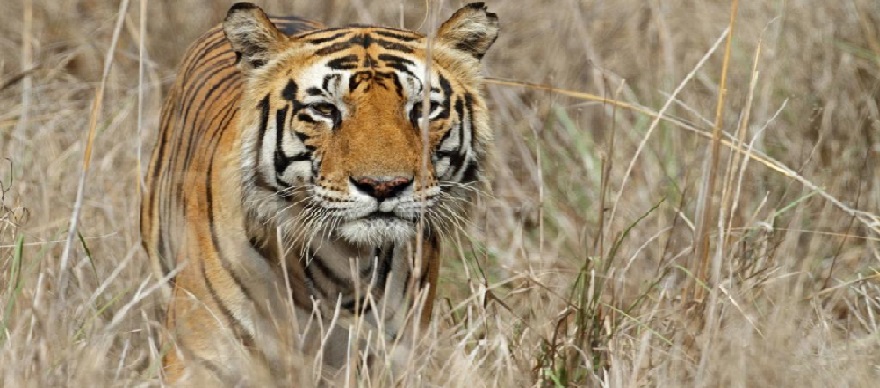Tips for Photographing Wildlife at Valmiki Tiger Reserve

Valmiki Tiger Reserve, nestled in the serene landscapes of Bihar, is a haven for wildlife enthusiasts and photographers alike. Home to a diverse array of flora and fauna, including the elusive Bengal tiger, the reserve offers a unique opportunity to capture the beauty of nature through the lens. To make the most of your photographic expedition, here are essential tips for photographing wildlife at Valmiki Tiger Reserve.
1. Equip Yourself with the Right Gear: The Photographer's Arsenal:
Invest in a good camera with a telephoto lens to capture detailed shots from a distance. A lens with a focal length of 300mm or more is ideal for wildlife photography. Bring a sturdy tripod to stabilize your camera during long shots and low-light conditions. Additionally, pack extra batteries and memory cards to ensure you never miss a moment.
2. Study Wildlife Behavior: Anticipate the Action:
Understanding the behavior of the wildlife at Valmiki Tiger Reserve is crucial for capturing compelling shots. Study the habits and routines of the animals you wish to photograph. This knowledge will enable you to anticipate their movements, increasing your chances of capturing natural and candid moments.
3. Patience is Key: Wait for the Perfect Shot:
Wildlife photography demands patience. Position yourself in strategic locations, observe quietly, and wait for the perfect moment. Animals may exhibit fascinating behaviors, and patience allows you to capture these unique and authentic shots. The more time you spend observing, the more rewarding your photographs will be.
4. Early Mornings and Late Afternoons: Golden Hours for Photography:
The golden hours—early mornings and late afternoons—offer soft, warm light that enhances the beauty of your wildlife photographs. During these hours, the angle of the sun creates long shadows, adds depth to your images, and produces a pleasing, golden glow. Plan your photographic excursions around these optimal lighting conditions.
5. Use Natural Frames: Enhance Composition:
Utilize the natural surroundings at Valmiki Tiger Reserve to frame your shots. Overhanging branches, vegetation, or natural openings can serve as frames, drawing attention to your subject and adding depth to the composition. Experiment with different perspectives to find the most captivating natural frames.
6. Maintain a Safe Distance: Respect Wildlife and Preserve the Ecosystem:
While capturing close-up shots is enticing, it's essential to maintain a safe distance from the wildlife. Not only does this ensure your safety, but it also respects the animals' natural behavior and preserves the integrity of their habitat. Use longer lenses to capture intimate shots without intruding on their space.
7. Learn to Use Manual Settings: Control Your Exposure:
Mastering manual camera settings is crucial for wildlife photography. Understand the exposure triangle—aperture, shutter speed, and ISO—and learn how they interact. This knowledge allows you to control the amount of light entering your camera, resulting in well-exposed and sharp images, even in challenging lighting conditions.
8. Experiment with Composition: Tell a Visual Story:
Explore various composition techniques to tell a visual story through your photographs. Practice the rule of thirds, leading lines, and framing to create dynamic and visually appealing images. Experiment with different angles and perspectives to add variety to your wildlife photography portfolio.
9. Blend into the Environment: Be Inconspicuous:
Animals are more likely to exhibit natural behaviors when they are unaware of your presence. Wear earthy-toned, non-reflective clothing to blend into the environment. Move quietly and avoid sudden movements to become inconspicuous. This approach allows you to capture candid moments without causing disturbance.
10. Post-Processing: Enhance, Don't Manipulate:
Post-processing is a valuable tool for refining your wildlife photographs. Use editing software to enhance colors, adjust exposure, and sharpen details. However, it's crucial to maintain the integrity of the image and avoid excessive manipulation. Let the beauty of Valmiki Tiger Reserve shine through in your photographs.
Conclusion: A Visual Journey through Valmiki Tiger Reserve
Photographing wildlife at Valmiki Tiger Reserve is a rewarding experience that allows you to document the untamed beauty of nature. Armed with the right gear, patience, and an understanding of wildlife behavior, you can capture stunning moments that tell the story of this incredible ecosystem. Remember to prioritize the well-being of the wildlife and the preservation of their habitat, ensuring that your photographic journey contributes to the conservation of Valmiki Tiger Reserve's rich biodiversity. Happy shooting!